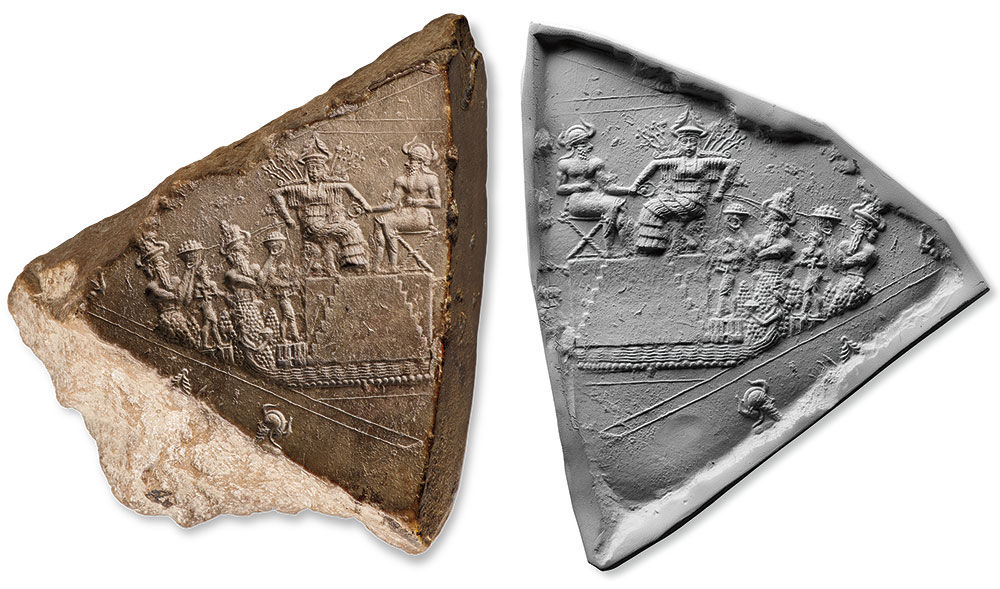
The goddess Ishtar in her warrior aspect sits on her lion throne atop a stepped platform. Seated across from her as if an equal is the Akkadian king Naram-Sin, Enheduanna’s nephew and Sargon’s grandson, whose deified status is also indicated by his horned crown. He clasps a ring with four attached ropes; Ishtar grasps his wrist with one hand and with the other guides the ropes behind her back. The ropes are attached to the nose rings of captured mountain gods bearing offerings, perhaps precious minerals, and shackled rulers standing on buildings that represent their cities. They all look up to Naram-Sin, who looks directly at Ishtar. Ishtar’s commanding frontal gaze and the angularity of her assertive gesture indicate that it is through her power and with her blessing that Naram-Sin is king.
Mold fragment with deified ruler and Ishtar
Mesopotamia, Akkadian
Akkadian period, ca. 2220–2184 BC
Limestone
Anonymous loan
Sidney Babcock: Clearly the work of a most accomplished seal carver, the fragmentary mold demonstrates another aspect of the complex iconography developed by the Akkadian artists—for expressing not a mythological setting for a god, but a real setting for an actual living god—the deified king, Narim-Sin.
He is depicted seated as an equal with Ishtar upon a stepped structure most likely the holy dais of Agade, the capitol city of the empire on which according to a later text Narim-Sin rose daily like the sun god. Narim-Sin and Ishtar are deciding matters together and are ruling over the conquered world. How different this view of the order of things is from the scene on the Uruk vase discussed in stop 2 object no 9, where the ruler approaches the goddess with offerings reflecting the careful nurture of the land. Instead, here, two subjugated mountain gods present bowls containing tribute to Ishtar and Narim-Sin. Representing precious raw materials and are a visual manifestation of the idea and importance of resource extraction that is the perogative of the conqueror. The scene visually indicates and emphasizes that it is through the goddess Ishtar that Narim-Sin has not only conquered one mountainous area but that he also rules that region by the goddesses intervention. The lost scenes surrounding the central scene of the mold must have shown other conquered and controlled parts of the empire. As a whole, the object was essentially a world map of Narim-Sin’s empire with perhaps the capitol, Agade at its center.
